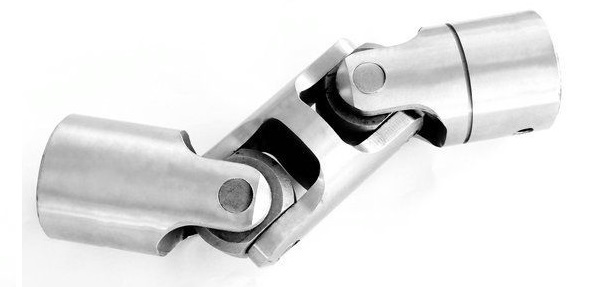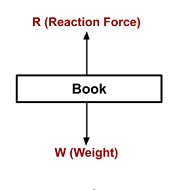This article can help mechanical engineers looking for job opportunities with their interview preparation. In this article, we will discuss commonly asked mechanical engineering interview questions and answers for fresher mechanical engineers.
Interview questions discussed here are from the engineering curriculum. If you have a good understanding of mechanical engineering basics, You can answer these mechanical engineering interview questions for freshers.
Top 30 Mechanical Engineering Interview Questions with Answers
Following are the top 30 mechanical engineering interview questions for fresher mechanical engineers:
- What is the gear ratio?
- What are various types of gear trains?
- What is a free body diagram?
- Draw a free body diagram for a book on the table.
- What are the three laws of thermodynamics?
- What is a universal coupling joint?
- What is a cotter joint?
- Define knuckle joint?
- What is bearing?
- What are various types of bearing?
- What is heat treatment and why is it done?
- What are various heat treatment processes?
- What is the difference between case hardening and surface hardening?
- How to calculate the module of a gear?
- What is the pressure angle in gears?
- What have commonly used pressure angle values in gears?
- What is backlash in gears?
- What are various types of gears?
- What is the degree of freedom?
- What are kinematic links?
- What is the Grubler rule to calculate the degree of freedom?
- What is an auto-cycle in thermodynamics?
- What is a diesel cycle?
- What is belt drive?
- What are different types of belts?
- What are the types of belt drive?
- What is the Fourier Law of heat transfer?
- Which material has higher thermal conductivity: copper or aluminum?
- What is convective heat transfer?
- What is Newton’s law of cooling?
Below are the answers of commonly asked mechanical engineering interview questions for freshers.
What is Gear Ratio?
Gear ratio is the ratio of output and input number of teeth on a shaft. The gear train consists of gears in series. They are used to increase or decrease the speed or torque of the output shaft. For more details on Gear Ratio Click this link to know in detail about Gear Ratio.

What are various types of Gear Train?
Here are the various types of Gear Train:
- Simple Gear Train
- Compound Gear Train
- Reverted Gear Train
- Planetary Gear Train
What is a Free Body Diagram?
A free body diagram (FBD) is a graphical representation of the external forces acting on a body. It helps in solving static and dynamic problems in mechanical engineering. For more details on the Free body diagram visit this link.
What are the three laws of thermodynamics?
The First Law of Thermodynamics is also known as Law of Conservation of Energy states that energy can neither be created nor destroyed. Energy can only be transferred or changed from one form to another
The Second Law of Thermodynamics states that the total entropy of an isolated system can never reduce over time.
Third Law of Thermodynamics states that, if an object reaches the absolute zero temperature (0 K = −273.15ºC). its atoms will stop moving.
What is a Universal Coupling/Joint?

The universal joint is used to transmit rotary motion or power between two shafts. This coupling helps in compensating the misalignment of the axis. Click this link to know the various types of couplings and their application.
What is a Cotter Joint?
Cotter joints are used to join two shafts that are transmitting motion in the axial direction. Therefore these joints are subjected to axial and compressive forces. For example, joint between piston rod and crosshead of the steam engine.
Define Knuckle Joint?
Knuckle joints are used to join two roads under tensile load. This joint allows angular misalignment between shafts.
What is Bearing?
A bearing is a machine element that constrains relative motion and allows rotation or linear movement of a shaft. It also helps in reducing friction between two objects.
What are Various Types of Bearing?
- Types of Bearing Accoring to Load They can Bear
- Radial Bearing
- Thrust Bearing
- Types of Bearing Accoring their Construction
- Ball Bearing
- Singal Row
- Double Row
- Deep Groove
- Anghular Contact
- Self Aligning
- Thrust Ball Bearing
- Thrust Bearing
- Straight Roller
- Tapered Roller
- Cylindrical Roller
- Spherical Roller
- Journal or Sliding Contact Bearing
- Full Journal
- Partial Journal
- Fitted Journal Bearing
- Ball Bearing
What is Heat Treatment and Why is it done?
Heat treatment involves first heating then cooling material to change its physical, mechanical, and chemical properties. Read this article for more details on various heat treatment processes.
Note: If you are preparing for an interview for a company that deals in materials. Interviewers can ask interview questions on Material Properties, Heat treatment, etc.
What are various Heat treatment Processes?
- Hardening
- Tempering
- Annealing
- Normalizing
- Carburization
- Case / Surface Hardening
Note: We suggest you read all these hardening processes in detail. It will help you during your interview. The interviewer can cross-question your answers.
What is the difference between Case Hardening and Surface Hardening?
Case hardening creates a thin layer of hard material on the surface. Whereas surface hardening hardens the outer surface of a material.
How to calculate the module of a Gear?
The module of gear is inverse of the diametric pitch. Mathematically it is equal to the ratio of pitch circle diameter and number of teeth. Gears with equal modules can only mate with each other.
Module (m) = Pitch circle diameter / Number of teeth
What is Pressure Angle in Gears?
Pressure angle is the angle between the gear center line and a line perpendicular to the line of action. It defines the tooth profile. Read this article for detailed information on various gear Terminology.
What are commonly used pressure angle values in gears?
Commonly used gear pressure angle values are 20°, 25°, 22.5°or 14.5°
What is Backlash in Gears?
Backlash is the tangential space between gear mating teeth at pitch circles. Mathematically:
Backlash = Teeth Space – Teeth Width
What are various Types of Gears?
According to the type of motion, a gear transfers from one shaft to another. Gears are classified into the following types.
- Spur Gear
- Helical Gears
- Herringbone and Double Helical Gears.
- Rack and Pinion
- Bevel Gear
- Worm and Worm Wheel.
- Spiral Gear
- Hypoid Gear
- Internal Gears
What is the Degree of Freedom?
Degree of Freedom is defined as the minimum number of independent variables required to define the position of a rigid body in space.
Interviewers can also ask you to give some examples of degrees of freedom. For example, the degree of freedom of a moving car. is two. Get prepared for questions like this. Refer to this article for more details on the degree of freedom.
What are Kinematic Links?
Kinematic links are used to transfer motion from one point to another point. One link is joined to another link by joints. These joints add kinematic constraints to the link.
What is Grubler’s Rule to calculate the Degree of Freedom?
According to Grubler’s Rule:
DOF = 3 × (n-1) – 2l -h
Where
F = Degrees of freedom
n = Number of links
l = Number of lower pairs.
h = Number of higher pairs (If more than one input is required to constraint a link)
What is an Otto Cycle?
The auto cycle is an ideal thermodynamic cycle that requires four strokes of the Piston:
- Induction
- Compression
- Ignition
- Exhaust.
Most petrol engines in automobiles work on this cycle.
What is a Diesel Cycle?
The diesel cycle is a combustion process of a reciprocating internal combustion engine. In this, fuel is ignited by heat generated during the compression of air in the combustion chamber. It is used in diesel engines.
What is Belt Drive?
Belt drive consists of two or more pulleys connected with a belt in tension. Similar to gears, belt and pulley drive offers one of the best ways to transfer power from one shaft to another.
What are the different types of Belts?
- Flat Belts
- V belts
- Round Belt
- Timing Belt
What are the types of Belt Drive?
- Open Belt-Drive
- Cross Belt-Drive
- Stepped Cone Pulley
- Jockey Pulley Drive
- Fast and Loose Pulley Drive
What are various modes of heat transfer?
Heat can be transferred from a hot body to a cold body by following three modes of heat transfer:
What is the Fourier law of heat Transfer?
The rate of conduction heat transfer is directly proportional to the contact area, material thermal conductivity, temperature difference, and inversely proportional to the thickness.
Conductive Heat transfer (Qc) = – K A (dT / L)
Which material has the highest Thermal Conductivity: Copper or Aluminum?
Copper has the highest thermal conductivity compared to aluminum.
What is Convective Heat Transfer?
Transfer of heat from one place to another due to the molecular movement of fluids (Air or liquid) is known as convection heat transfer. When molecules move from one place to another they carry heat with them.
What is Newton’s Law of Cooling?
According to newton’s law of cooling, the Rate of convective heat transfer is directly proportional to heat transfer surface area, convective heat transfer coefficient and temperature difference.
Convection Heat transfer (Qv) = hc A dT
We will keep adding more questions to Mechanical Engineering Interview questions and answers for freshers. Please add your comments or questions to the Mechanical Engineering Interview questions and answers.
Other Useful links for Mechanical interview questions and answers
Mechanical Design Interview Questions and Answers
Mechanical Engineering Interview Questions and Answers
https://www.smlease.com/entries/qsm_quiz/quiz-on-gear-ratio-torque-and-speed-calculations/


Please check your ans for knuckle joint.it has some error in it
As per our understanding, this is correct. Please share your thoughts on this.
Answer: As we know the transfer is rated in KVA because its PF (power factor) depends on the nature of the loads. However, motor has a fixed (P.F) and the rating has been mentioned in KW or HP on motor. In more clear words, motor only consumes active power and provides mechanical power in HP or KW at the motor shaft and that is the reason for motor rating in watts. Answer: Motor starter is a device that connects in series with the motor to decrease the starting current that could damage the winding in normal condition and gradually increase current after starting the motor in other words start or stop the motor and provide overload protection.